No matter what industry you’re in, the success of your business depends on your ability to turn online visitors into customers.
Conversion marketing provides a way to increase the rate at which visitors become buyers.
In this guide, I will give you a complete breakdown of what conversion rate marketing is, how it works, and how you can use it to your advantage.
What is conversion rate marketing?
Conversion rate marketing is a marketing strategy designed to maximize your conversion rate.
It is usually referred to as conversion rate optmization.
What is a conversion?
A conversion is an event where someone takes a desired action beneficial to your business. This could be a sale, an email sign-up, an add-to-cart, or any other objective you select.
What is conversion rate?
Conversion rate is a metric that measures the percentage of people that result in conversions.
How do you calculate conversion rate in marketing?
You can find your conversion rate with the following formula:
(Number of conversions / Total number of visitors) x 100
For example, if you get 1000 website visits and 50 of them buy a product from your store, then your conversion rate is (50 / 1000) X 100 = 5%.
Why is conversion rate important in digital marketing?
Conversion rate is an essential part of digital marketing because it determines the value of your online traffic.
You can increase your total revenue without raising your prices or driving more visitors to your site simply by having a higher conversion rate.
Let’s compare two scenarios:
Scenario 1 – You bring 1,000 people to your site, convert 1% into sales (10 sales), with an average sale price of $100. This results in $1,000 in revenue.
Scenario 2 – You bring the same number of people to your site (1,000) but convert 2% into sales (20 sales). With the same average sales price, you’ve generated $2,000 in revenue.
What is a good conversion rate?
A good conversion rate is anything above 2%. The actual percentage varies drastically depending on your industry.
If you sell commodity-type e-commerce products you can expect to convert more of your visitors than software as a service (SaaS) company selling high-ticket software that requires more consideration.
According to the Conversion Benchmark Report from Unbounce, these are the average conversion rates for key industries:
Average Conversion Rates Per Industry
| Industry | Conversion Rate (%) |
| Agencies | 2.4 |
| Real Estate | 2.6 |
| SaaS | 3 |
| Family Support | 3.4 |
| Business Services | 3.5 |
| Medical Services | 3.6 |
| Home Improvement | 3.7 |
| Travel | 3.8 |
| Events & Leisure | 4.8 |
| Ecommerce | 5.2 |
| Legal | 5.4 |
| Fitness & Nutrition | 5.6 |
| Education | 5.8 |
| Finance & Insurance | 6.2 |
| Media & Entertainment | 7.9 |
| Catering & Restaurants | 9.8 |
Here is also a graph showing the average conversion rate per industry.
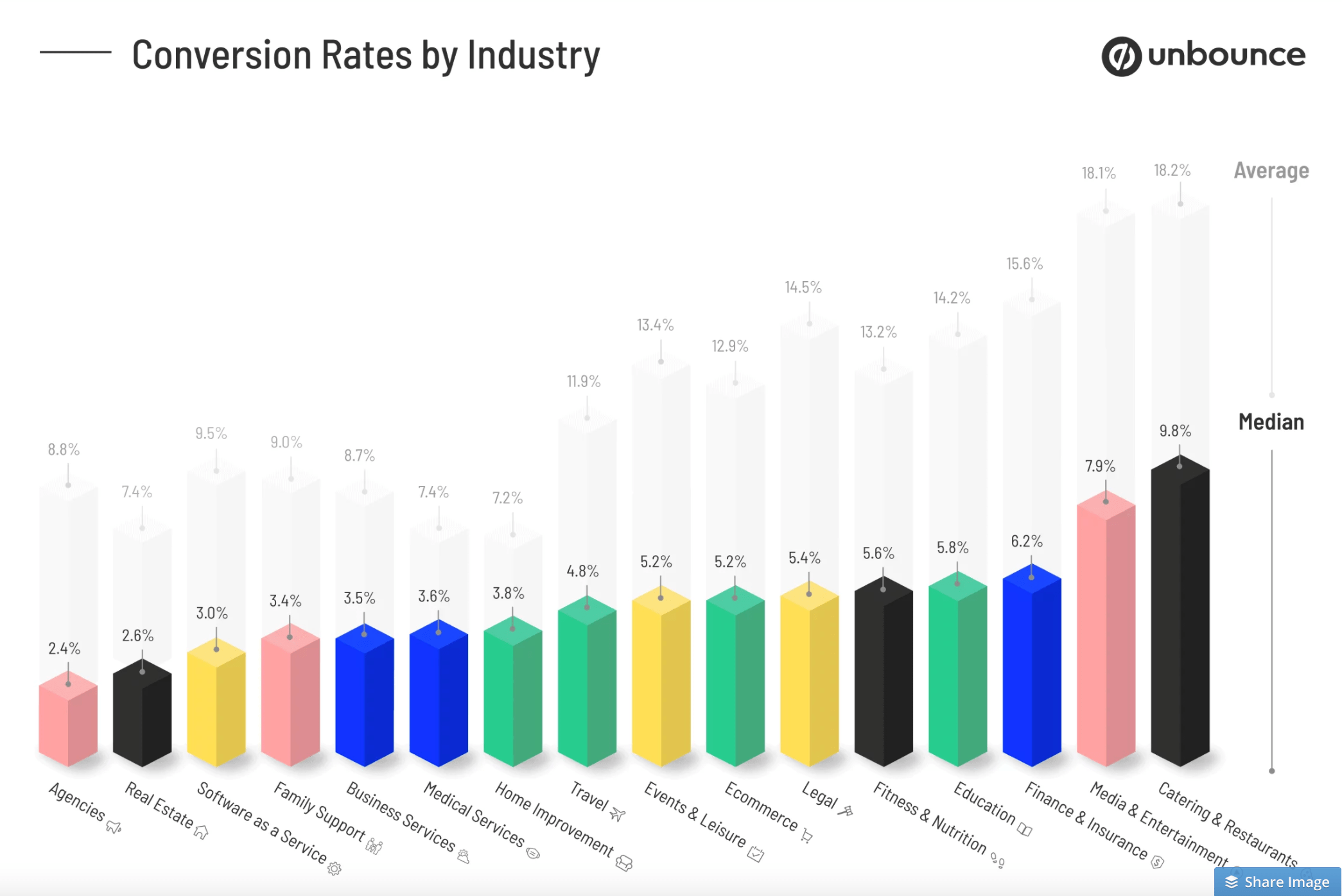
How to improve a low conversion rate
- Find out where the problem is
- Analyze user behavior with heatmaps and session playbacks
- Create dedicated landing pages for paid campaigns
- Carry out controlled A/B tests
- Revise your CTA
- Add limited-time offers and one-time discounts
- Win the social proof game
- Use remarketing to get more conversions at a lower cost
- Revise your paid campaigns
1. Find out where the problem is
The first step to improving a low conversion rate is to find the problem areas that are causing visitors to leave without taking the desired action.
Once you find what is negatively impacting your conversions, you can make the necessary changes to improve your results.
Start by analyzing the behavior of your website visitors. You can see how people are behaving on your site by looking at the data within Google Analytics.
You can use the Behavior report to get an overview of your most popular pages:
By clicking on a page, you can see:
- The average amount of time spent on the page
- Bounce rate
- The percentage of visitors that exit your site after viewing the page
With the Behavior Flow report, you can see where people are entering your site, how they move through different pages, and where they are exiting from.
Marketing funnels guide visitors from interest to purchase. They are based on the idea that buyers go through different phases throughout their purchasing journeys.
Funnels are divided into phases to match the buyer’s journey. Each uses different content to appeal to the buyer’s current position in the funnel.
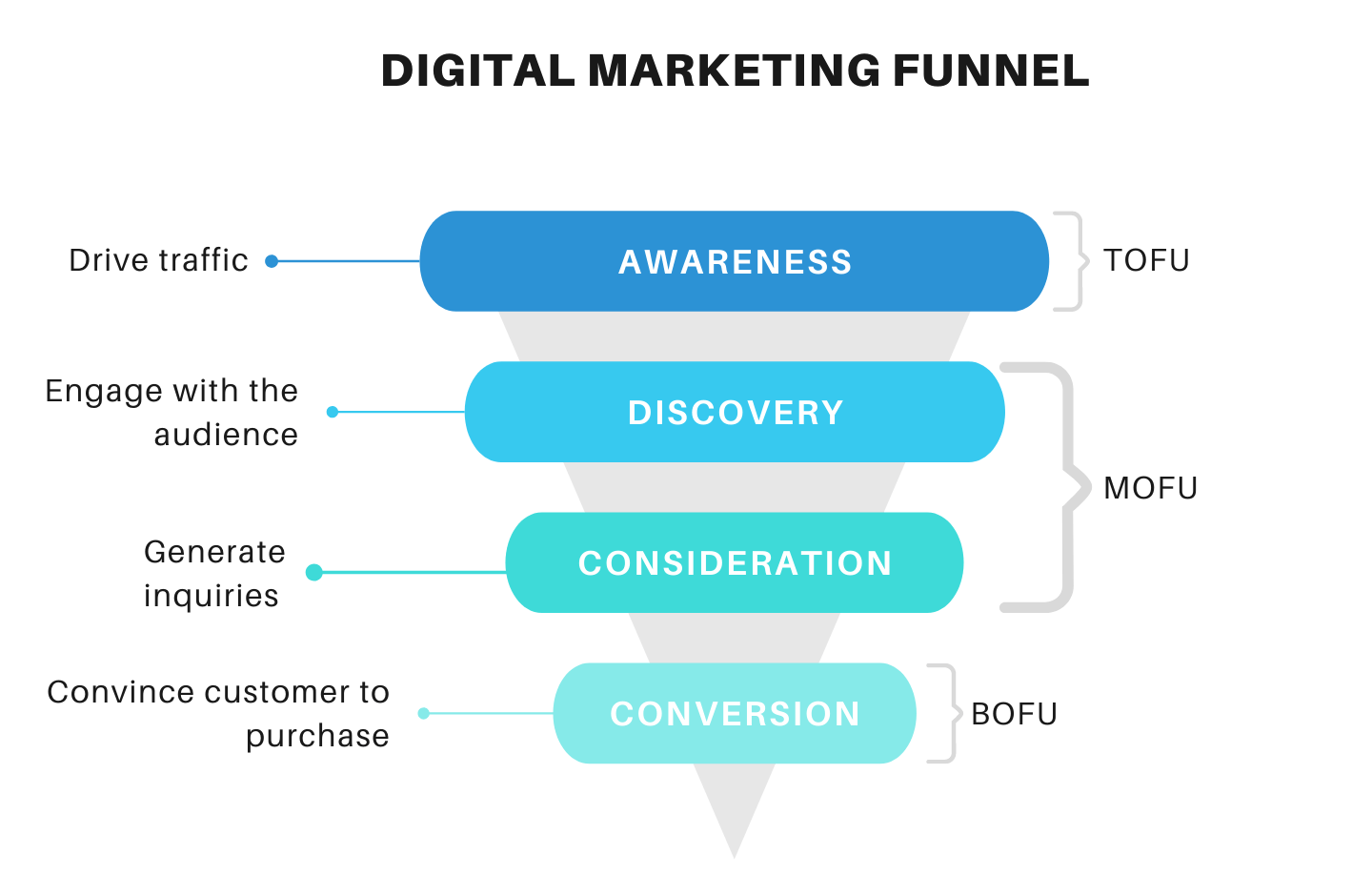
You should lay out the sequence of pages you want visitors to follow from the first interaction with your business all the way to becoming a customer.
After you design your marketing funnel you can create a funnel report in Google Analytics. This will allow you to track how people are moving through your funnel. You can then quickly see if there are any problem areas.
Enable event tracking
By default, Google Analytics only tracks events that generate a pageview.
To get a clear picture of the actions people take on your site, you’ll need to set up event tracking. With event tracking you can see when users perform actions like:
- Scrolling down the page
- Clicking a button
- Downloading a file
- Clicking on an external link
- Abandoning a sign-up form
Optimize for mobile
When optimizing for conversions it is a common mistake for digital marketers to focus too much on the desktop experience.
However, most of today’s web visitors are using mobile devices. As such, optimizing for mobile should be your top priority.
2. Analyze user behavior with heatmaps and session playbacks
Analytics platforms give you a high-level view of your website performance but they do not necessarily inform you WHY a customer took a certain action.
Let’s say you have an e-commerce store. Reviewing the data in Google Analytics, you can see that many visitors are exiting from your product pages.
But what about the product page is causing them to leave? It could be any number of issues.
You can get better insights into what is driving your visitors’ behavior by using heatmaps and session recordings.
Heatmaps
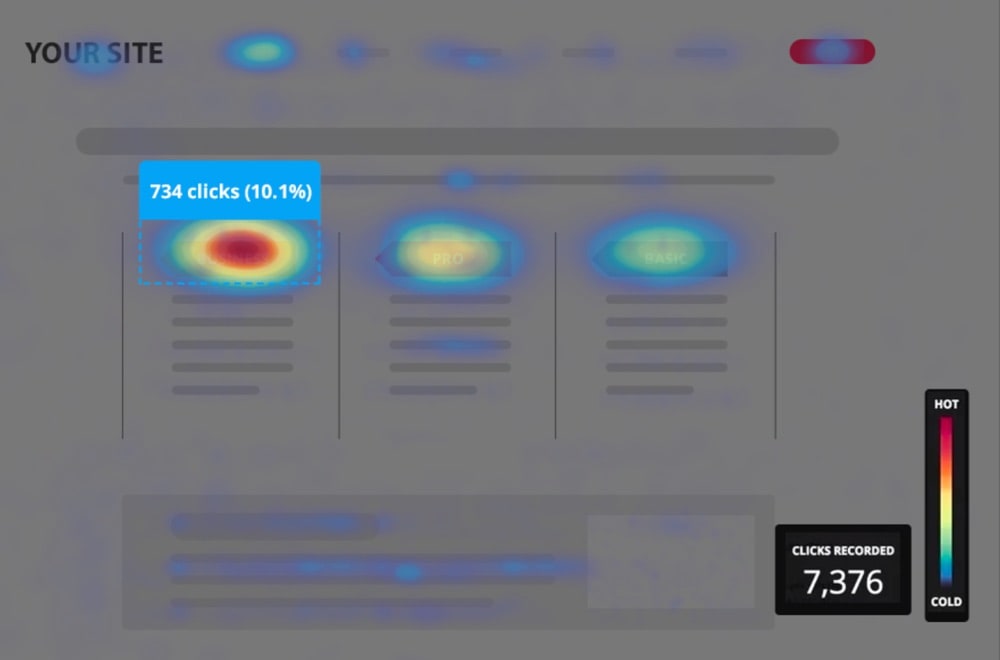
A heatmap is a tool that shows you which areas of your web page users are paying the most attention to.
When you look at a heat map, it highlights the areas where people are scrolling and placing their cursors in different colors.
The darker the coloring, the more active that area is. You can use this visualization to see which areas are most important to visitors and then focus on optimizing these areas.
Session playback
A session playback is a video recording of a user’s visit to your site.
It is extremely insightful as you can see with your own eyes exactly what a user did during their visit.
Let’s go back to our example of the e-commerce store with struggling product pages to see how you can use this to optimize conversions.
When viewing a session playback you see that many visitors are tapping the product images on their phones again and again trying to get a closer look but are unable to do so (also known as rage clicking). After enough failed attempts, they leave the page.
In this situation, you would want to add some image zoom functionality to your mobile site.
By doing so, you’ll likely view later sessions to find that people are able to zoom in on the images and are adding more items to their cart as a result.
3. Create dedicated landing pages for paid campaigns
If you run paid ad campaigns (such as Google search campaigns), it is essential to create standalone landing pages to send your visitors to.
When users click on an ad they expect the content on the proceeding page to match the messaging of the ad.
In most cases, the content on your homepage and other pages will likely not match the context of your ads.
When creating your landing pages, you want them to be simple and without any distractions. There should be one call-to-action and the steps needed to proceed should be clear.
As I previously mentioned, the pages should be optimized for mobile as that is where the majority of traffic comes from.
This means not only creating a mobile-friendly design but ensuring that the pages load fast and without errors.
Beyond improving conversions, dedicated landing pages can help you lower advertising costs.
With a better landing page experience, Google will give your ads a higher Quality Score.
A better Quality Score helps your ads get more impressions and can lower your cost-per-click (how much you pay for each visitor).
4. Carry out controlled A/B tests
Extensive testing is critical to maximizing your conversion rates.
What works best in theory may not be what actually works best in practice.
The only way to truly know what yields the best conversions is to test.
A/B testing is the process of testing different variables to see which yields the best results.
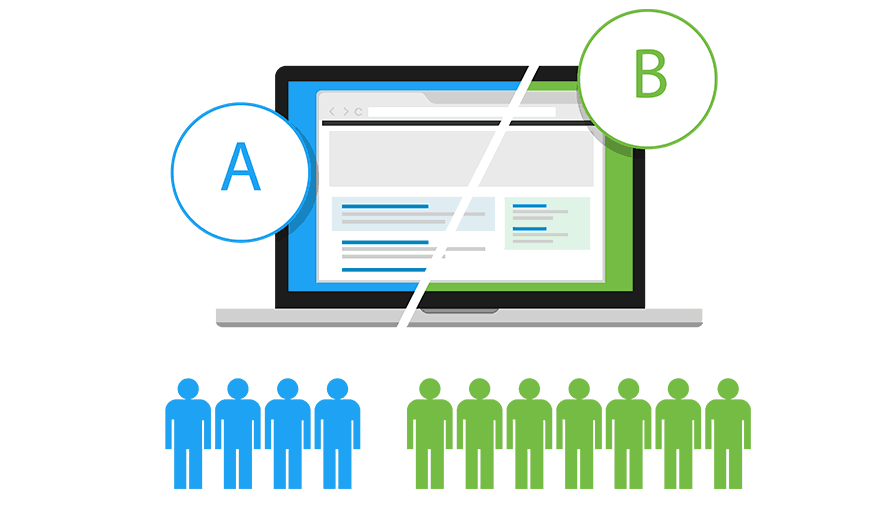
When you run an A/B test, your existing website serves as the control that you are testing against (version A).
You create a variation of the control where certain elements are different (version B).
When visitors view your website, half of them are served version A and half receive version B.
As your users receive different versions, you are analyzing the performance metrics for each version to see which is doing better.
The test runs until you have enough data to statistically prove the better version.
Here are some of the different elements you can evaluate in your A/B test:
Headline
Your headline is the first thing visitors notice when scanning your landing page. It should be concise and should grab the visitor’s attention.
It should relate to the product or service and if you run ads, it should match the messaging of the ad. Along with different copy, you can try testing different font sizes and colors.
Body copy
The body text of the page should clearly present the value you are offering to the customer. Like the headline, you can test different messaging, fonts, and colors.
Layout
You should design your pages so that they are easy to navigate and understand. You can experiment with the layout of your pages by arranging elements like images, icons, and videos in different ways.
Call to actions (CTA)
You can test different wording and layouts for your CTAs to see what provides the best results. I’ll discuss this in more detail in the next step.
Forms
If your conversion goal is email subscriptions, your sign-up forms are an important element to test.
Including more fields in your form can give you more data on the prospect but can also cause friction that causes them not to complete the form.
Only test one element at a time
When you perform your A/B tests, it is important to only test one variable at a time.
If you try running tests where multiple elements are different, it will be difficult to know the impact each truly has on your conversions.
By only testing a single change, you gain a direct insight into how that element performs.
You can create multiple variations to test against your control but each test should be performed separately.
As you grow in experience, you can consider experimenting with more complicated forms of testing like multivariate testing.
A/B testing tools
To perform A/B tests, you’ll need an A/B testing tool. The tool will allow you to create different versions of your pages. It also tracks the performance of your variations so you can review the analytics to see which is better.
Here are some of the most popular A/B testing tools:
- Google Optimize
- Optimizely
- VWO
- Unbounce
- HubSpot
5. Revise your CTA
A call-to-action (CTA) is the messaging used to direct a user to your conversion goal. The messaging typically appears within the button the user must click to complete the conversion.
For example a button beneath an email submission form that says “sign up”.
Your CTAs should be specific to your conversion goal. You want to use direct language like “buy now” or “download now” that makes it clear what action the user should take.
Here are a few examples:
- If you are selling products – add ‘Buy Now’
- If you are selling online courses – add ‘‘Enroll Now’
- If you want people to contact you – add ‘Call Now’ or ‘Contact us Now’
- If you are promoting an offer – add ‘Get Offer’
Experiment with different messaging in your A/B tests to find what works best.
Another way to optimize your CTAs is to adjust the color of the button. This may seem trivial but different button colors can lead to drastically different results.
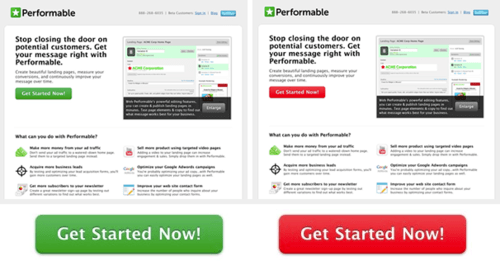
There isn’t one specific color that works better than others. Rather, the best practice is to use contrasting colors.
6. Add limited-time offers and one-time discounts
A great way to incentivize your visitors to take action is to present limited-time offers.
You can see an example of effective promotional offers by viewing the sales page for our digital marketing courses bundle.
The limited-time 70% off offer is prominently placed in the header. The countdown timer creates a sense of urgency and stands out on the page with the contrasting red color.
There is also a popup with a special one-time offer providing another $10 off.
The popup uses exit intent technology. When someone moves their cursor to try and exit the page, the popup automatically triggers.
7. Win the social proof game
Social proof is the process of showing your visitors that others have bought from you.
The idea behind social proof is that people often follow the actions of others and will be more likely to buy after seeing others doing it.
Social proof takes on extra importance in digital marketing because people aren’t able to get a clear sense of products and services in person.
Here are some effective ways you can provide social proof to your visitors:
Display customer reviews
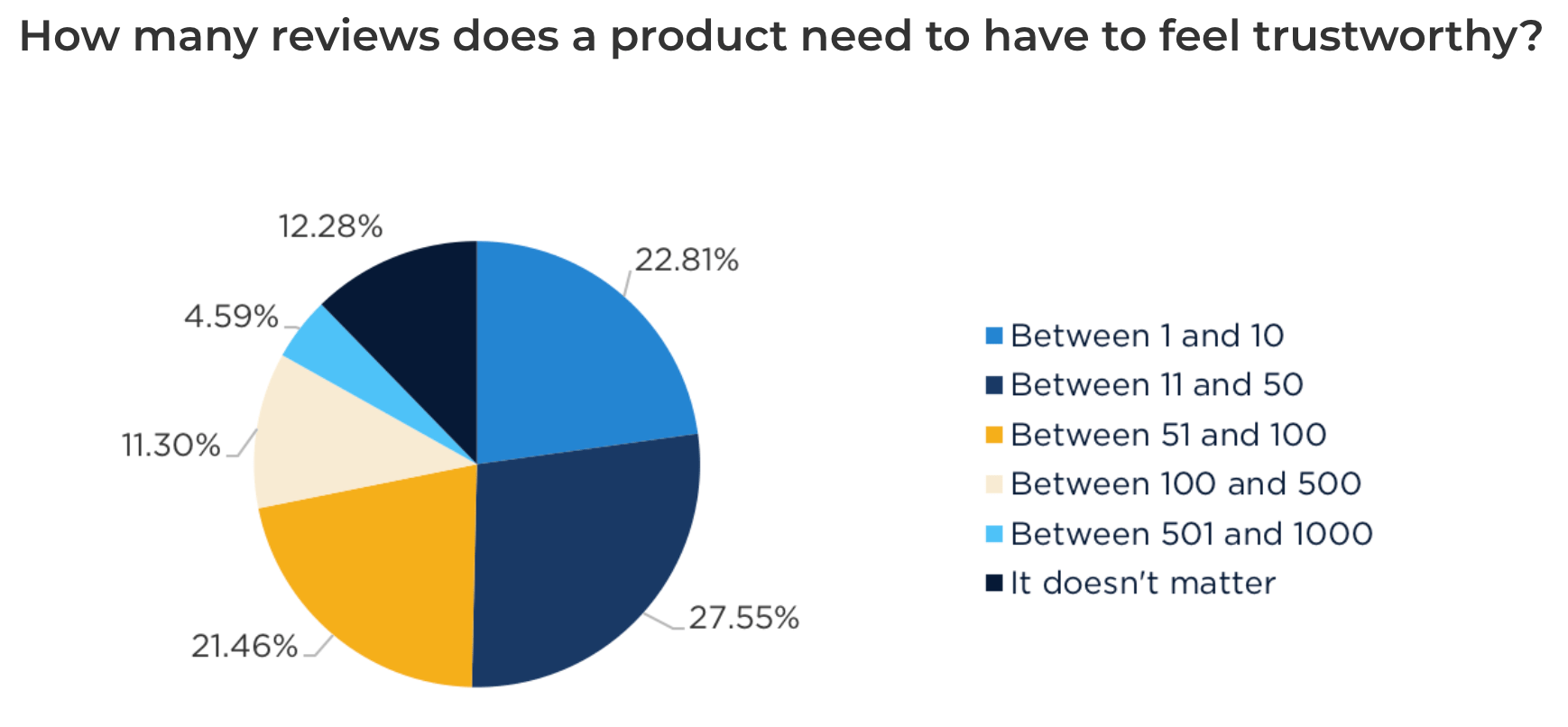
Written reviews from previous customers are one of the most effective forms of social proof.
Many people will look for reviews on your site and will even visit multiple third-party review sites before making a purchase.
You can take positive reviews from external sites and add them to your website to boost the confidence of your visitors.
Provide testimonials
Testimonials are similar to reviews but are usually a little more detailed. They are often part of a case study where a customer explains the success they have had using the business’ product or services.
Reach out to your previous buyers to see if they want to share their success stories with others.
Endorsements from influencers
Today, many people look to the opinions of celebrities and influencers to inform their buying decisions.
Look to get support from well-known influencers in your niche. You can then have the influencer make a quote about the product or service and then add it to your site as you would a review or testimonial.
Show notifications from recent purchases
Another form of social proof is to display browser notifications that show other people buying. The typical messaging for these notifications is something like “Mike from Ohio recently bought Product A”.
Our courses sales page which we previously highlighted does this well.
8. Use remarketing to get more conversions at a lower cost
Circling back to the average conversion rates across industries — it is clear that the vast majority of your visitors won’t convert regardless of how optimized your site is.
You could have an e-commerce store with double the average conversion rate (10%) and 9 out of 10 people would still leave your store without making a purchase.
You can boost your overall conversion rate by remarketing to these people and bringing them back to your website.
Remarketing with Google Ads
To run remarketing ads on Google, you’ll first need to enable Google conversion tracking and add a piece of code to your website.
The pixel tracks your website visitors and creates an audience list within Google Ads that you can use for remarketing.
Google remarketing uses dynamic display ads.
These ads will appear in front of your audience as they visit different websites in the Google Display Network.
The ads have higher click-through and conversion rates than normal display ads. They also have a much lower average cost-per-click (CPC) than search ads.
Remarketing with Facebook
Facebook remarketing ads function in a similar manner. You first need to install the Facebook pixel so that Facebook can track the visitors to your site.
You can then set these people as your target audience when creating campaigns.
Remarketing on Facebook has several advantages over Google and other platforms. The most notable being your options for ad types.
Whereas with Google you can only remarket with display ads, with Facebook you can use any ad type.
You can even create dynamic product ads that automatically show users ads for products they have visited on your site.
9. Revise your paid campaigns
If your paid advertising campaigns are not yielding your desired conversion rates there could be a problem with your audience targeting.
You could have the best product or service in the world and an awesome website but if you’re presenting them to someone who has no interest, it won’t make any difference.
For Facebook campaigns, you should analyze how people of different demographics and interests are engaging with your ads.
If you find that one audience segment does not perform very well (i.e people in a certain age group), you can exclude this group from your targeting.
For search campaigns, you’ll want to analyze your keyword targeting. You may notice that traffic from certain keywords isn’t performing very well. Or you may find that you are paying for clicks for irrelevant search terms.
You can filter out low-performing and irrelevant search terms by using negative keywords.
A negative keyword is a search term that you do not want your ad to show for. When you add one to a campaign, Google will make sure that your ad doesn’t show for that query.

For instance, let’s say you have a business that sells running shoes and nothing else.
You create a search campaign and add “shoes” as a target keyword using a broad match type.
With a broad match, your ad is eligible to appear for terms broadly related to the one provided.
In the case of the term “shoes”, this could very well lead to your ad appearing for searches like flip flops, high heels, or slippers.
Because your business does not sell any of these products, traffic from these searches is of little worth.
If a visitor searching these terms end up on your site, they will quickly leave after not finding what they want, lowering your conversion rate.
You can avoid this problem by ensuring that you are only targeting the most relevant keywords for your business.
Key Learnings
A conversion is when someone takes a desired action on your website such as a sale or email sign-up.
The conversion rate definition is the percentage of people that result in a conversion.
You can calculate your conversion rate with the following formula:
(Number of conversions / Total number of visitors) x 100
Conversion rate marketing is a marketing strategy focused on maximizing conversions.
With a successful conversion marketing strategy, you are able to grow your revenue without increasing your prices or the number of website visitors.
If your conversion rate is lower than what you desire, you can take the following steps to improve it:
- Find out where the problem is
- Analyze user behavior with heatmaps and session playbacks
- Create dedicated landing pages for paid campaigns
- Carry out controlled A/B tests
- Revise your CTA
- Add limited-time offers and one-time discounts
- Win the social proof game
- Use remarketing to get more conversions at a lower cost
- Revise your paid campaigns
- Enrolling in a good CRO Course is the best way to become an expert in conversion rate marketing
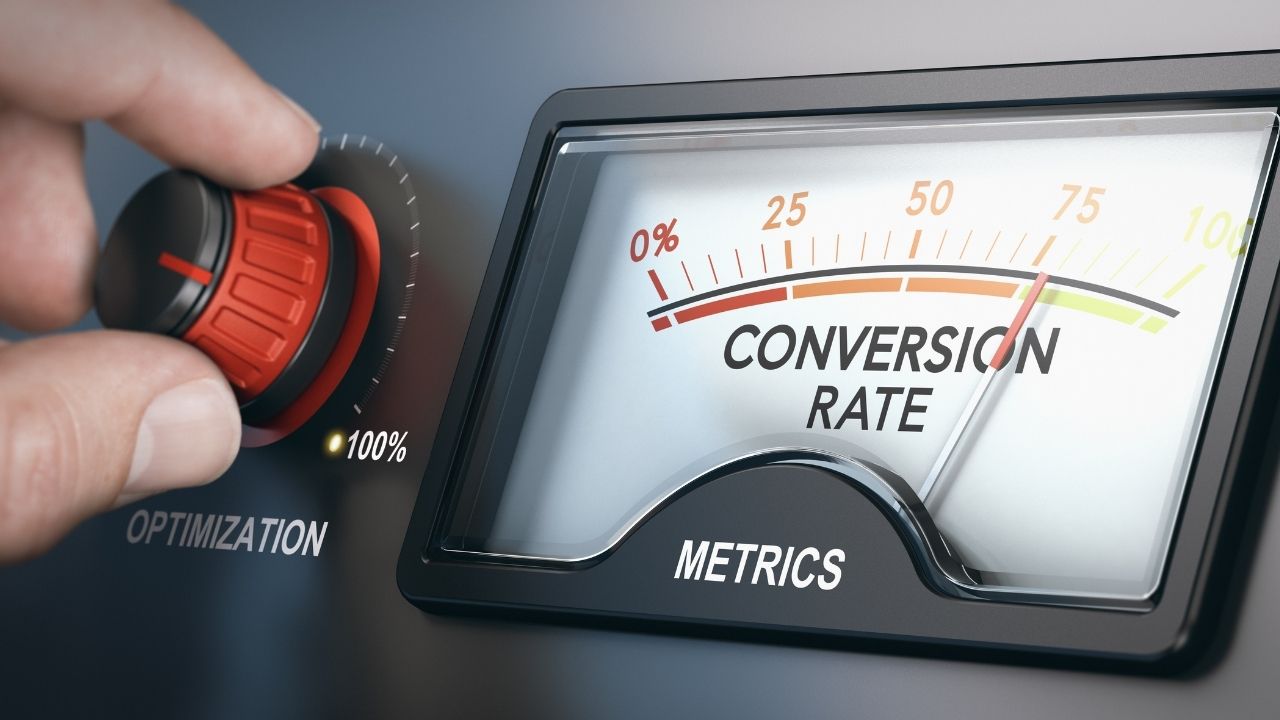



Leave a Reply